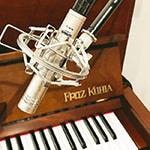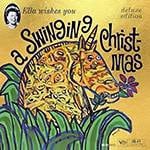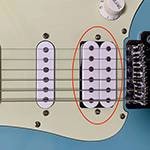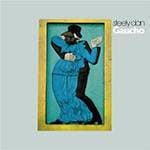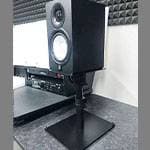■ Simulating Effects on the Nautilus EP-1: Chorus Edition
This is the exploration report of Korg’s workstation synthesizer, the Nautilus, continuing with Part VII of the Electric Piano section.
Up until my previous article, I covered three types of phaser effects along with the Rhodes Piano sound on the Nautilus EP-1.
This time, I would like to report on the three types of chorus effects.
The most commonly used effect on the Fender Rhodes Piano is the phase shifter.
Just like the phase shifter, another effect commonly that’s used on the Rhodes Piano is the chorus.
The chorus effect was famously featured in Roland’s iconic guitar amplifier, the JC (Jazz Chorus) amp.
At the time, no one could have imagined that this chorus would become a universally used effect. That was over 50 years ago.
As the name suggests, chorus is an effect that makes a single guitar sound as if another guitar is layered over it, or like a 12-string guitar. It creates the chorus effect by slightly delaying the original sound by around 15ms to 30ms.
In the case of delay, the most commonly used delay time is said to be 135ms (although there are various opinions on this). When you apply a 135ms delay, it’s hard to describe in words, but it’s the kind of sound where you can hear the "pa" of a “papa” being echoed as a short reverb. It’s a very short echo. Since chorus uses an even shorter delay time of 15ms to 30ms, it’s not something that can be easily distinguished by the human ear.
What makes it a chorus effect is the continuous application of this slight delay to the original sound that creates a thick and warm sound that has a slightly hazy texture.
■ Memories of the Chorus Effect
The guitar amp I used in the light music club during my school days was a JC-60 that had a chorus effect.
The JC is not a tube amp. It had a sharp, treble-heavy sound that made it stand out. My friends who used amps like the Jugbox or Guyatone had tube amps that produced a smoother, fuller sound compared to the JC. We affectionately called the JC “Jazz Co.”
Originally, I wasn’t particularly fond of the Jazz Co. sound. At the time, rock guitarists were playing on the Jazz Co. at full blast. The sharp, metallic “Jazz Co.” sound sounded harsh to my ears.
During a school festival live performance, I happened to connect the Rhodes Piano to the JC-60. I noticed a switch on the right side of the JC’s control panel, so I set it to CHORUS and turned the knob up a little.
To my surprise, the Rhodes Piano sound became much smoother and started to sound wider.
I was amazed. The sound that came out of the sharp and metallic. Jazz Co. was something I had never heard before.
I also adjusted the JC’s amp tuning by raising the bass and midrange while reducing the treble. It got closer to the sound I preferred. From that moment on, I became a fan of the JC—at least for connecting the Rhodes Piano to it.
The chorus effect that was built into the JC was later made into a standalone pedal by BOSS, and this became the CE-1 chorus pedal. These days, it’s a premium item and is sold for over 100,000 yen. Back then, it was priced at 25,000 yen.
CE-1 Successor
■ Tatsuro Yamashita’s Favorite Chorus
The Rhodes Piano is a must-have item in Tatsuro Yamashita’s live performances, and for this, he uses the Roland 3U chorus effect, the Dimension D.
The Dimension D has a LINE (+4 dB) impedance level, so it cannot be connected directly to the Rhodes Piano’s effect. Instead, the Rhodes Piano’s output is sent to a mixer, and the output is then taken from the mixer. At this stage, the Dimension D is inserted into the mixer’s effects loop. “Tatsuro’s signature sound is ‘Dimension on the Rhodes,’” and this is his particular preference.
■ The Chorus Even Loved by David Foster
Around 45 years ago, an album was released from the West Coast of the United States that became a huge sensation. It was an album by the band Airplay. The sound of Airplay was fresh and sensational. Even in Japan, the sound and phrases from Airplay were widely covered by many musicians and pop music. Whether you looked to the right or to the left, it was in an “Airplay state.”
The keyboardist of Airplay was David Foster. Even on the Rhodes Piano that David played, he applied the chorus. Since Airplay broke out in 1980, I used to foolishly say, “I was using chorus on the Rhodes Piano before David Foster did,” (embarrassing).
For nearly 50 years, chorus has been an indispensable effect, with continued demand from professionals. It has truly become an essential part of music production.
■ Preparing to Use the Three Types of Chorus Built into the Nautilus/h2>
Let’s move on to the effects on the Nautilus, specifically the chorus.
As I mentioned earlier, the BOSS CE-1 chorus effect is also included in the Nautilus as a simulation.
Now, I’ll try out the chorus that’s built into the EP-1 of the Nautilus.
To call up the sound source on the Nautilus, go to the display screen in the Setlist on Screen 1 and tap the "5" labeled "EP" which corresponds to the Tine type (Rhodes piano sound) called "EP Mark I Early Amp."

Nautilus Display Tine Type Sound The selected sound is EP Mark I Early Amp (Screen 1)
Next, press the MODE button (top-left) on the Quick Access buttons on Screen 2. This button will be the starting point when you move into different layers.

Quick Access Button The MODE button is located at the top-left (Screen 2)
From the Mode Select screen, tap PROGRAM (center of the screen), and it will bring up the electric piano sound source screen. (Screen 3)

Mode Select (Screen 3)
■ Tine EPⅠ Late Type (Rhodes Piano Sound) Built-in Effect Settings
1. Tine EPⅠ Late Effect Screen

This section is just like the previous one, and it explains how to connect and set up the built-in effects on the Nautilus for my later version Rhodes Mark I.
2. Tine EPⅠ Late Type, Effect Input/Output Terminal Screen

On the far left is the INSRT EFFECT terminal, which is used to apply effects. There are two parts: IN (top) and OUT (bottom).
For the actual Rhodes Piano, the shield cable from the effect’s OUT side goes into the IN terminal on the Rhodes side, and the shield cable coming from the Rhodes’ OUT terminal goes into the effect’s IN.
When using the built-in effects on the Nautilus, tap the INSRT EFFECT terminal screen on the left side of the display with your finger, and the next screen will appear.
3. Insert Effect Screen

The Insert Effect screen allows you to use 9 different types of effects. These include Small Phase, Orange Phase, Black Phase, Vintage Chorus, Black Chorus, EP Chorus, Vintage Flanger, Red Comp, and Vox Wah.
To apply a chorus to Tine EPⅠ Late, tap the Vintage Chorus character screen at the top-right of the screen and select Vintage Chorus.
4. Selected Vintage Chorus Effect Screen
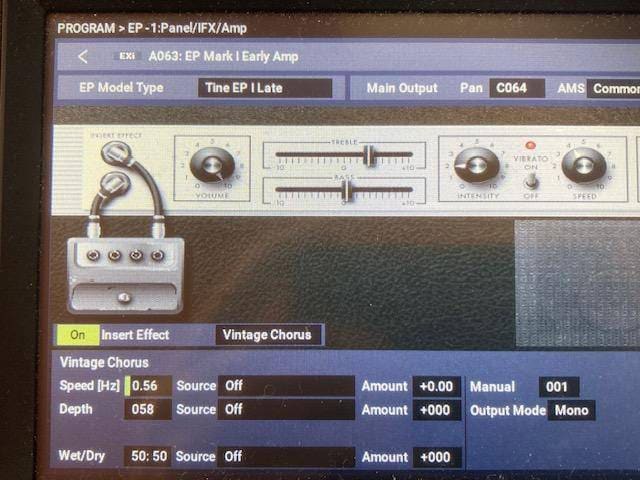
This Vintage Chorus is a chorus effect that simulates the BOSS CE-1. The shape of the character is also similar to the original CE-1. It has been aged to give it a vintage feel.
Set the values for the Chorus Speed and Depth. While the settings can be similar to those for the phaser, this setup feels a bit more straightforward compared to the phaser. The effect of the chorus may be harder to notice than that of the phaser, but this is likely based on the writer’s personal sense of it.
5. Enlarged Vintage Chorus Effect Screen
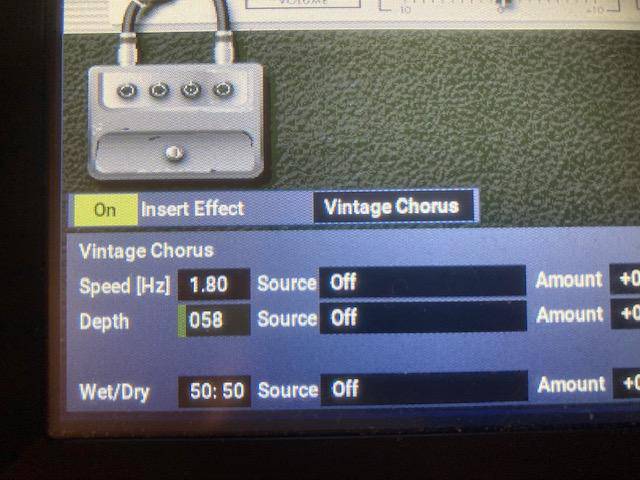
To make the chorus feel more effective, increase the Speed value to 1.80. With this setting, you can feel the chorus more clearly. The Depth is set to 0.58. If you listen to the sound with these settings on the phaser, it might sound too much.
6. Black Chorus Effect Screen

Compared to the Vintage Chorus, the Black Chorus produces a sound with a stronger chorus feel and more of a hazy, whirring sound. This doesn’t mean the sound is bad—quite the opposite, it sounds very nice. In addition to Speed and Intensity, this effect adds a category called Width. The Width controls the strength of the hazy effect.
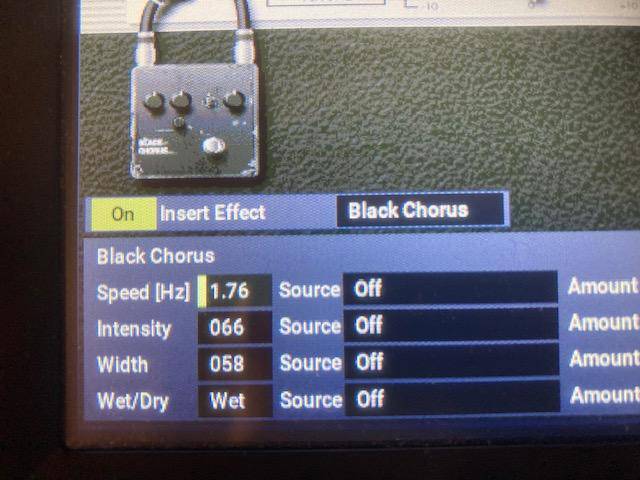
Like the Vintage Chorus, a faster Speed setting on the chorus helps enhance the chorus effect. It creates a very pleasant sound. If you set the Width too high, it might feel a bit "too much." This comes down to personal taste.
7. EP Chorus Effect Screen
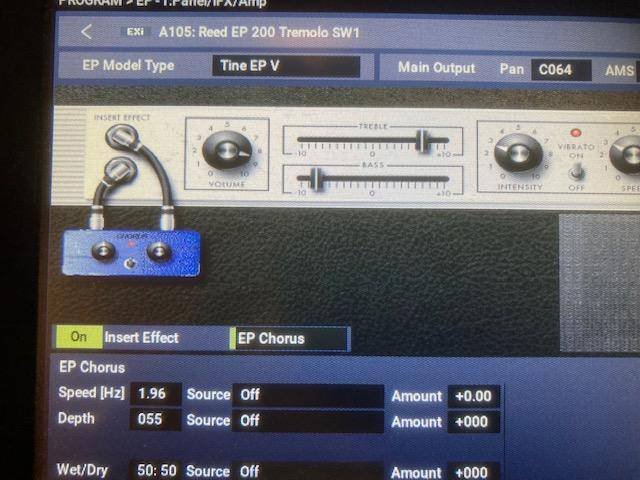
Among the three, the EP Chorus gives the cleanest and most powerful impression.
8. EP Chorus Effect Screen
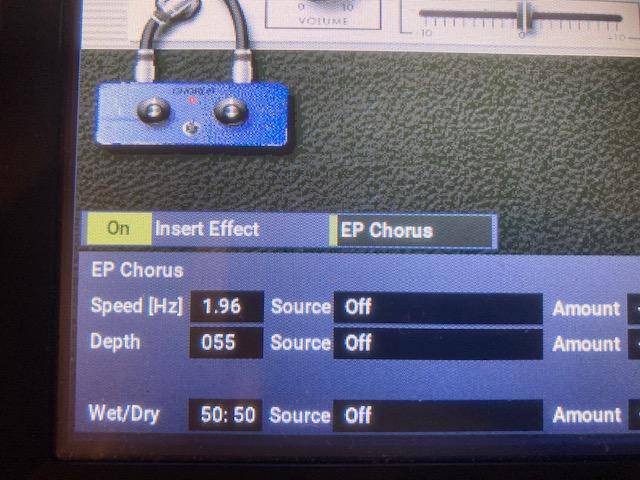
Like the Vintage Chorus and Black Chorus, a Speed setting closer to 2 (faster than the phaser) seems ideal for the EP Chorus. This is a matter of personal preference, but the mid-to-high range of the sound appears clearer compared to the other two types.
All three chorus effects in this case achieved a high-quality effect.
When using a chorus, especially when holding whole notes or adding simple obbligatos in slow songs, setting the Speed to a faster setting (compared to the phaser) helps make the chorus effect more prominent. On the other hand, for songs with a mid-tempo or faster rhythm where melodies are played, if the Speed is set to around 1.8, the melody or chords might clash with the effect sound, causing the overall sound to become blurred. So, the setting values should be adjusted based on the song's needs.
Next time, I’ll be concluding the EP-1 effect series with tests on the flanger, compressor, and wah. Stay tuned!
The “sound & person” column is made up of contributions from you.
For details about contributing, click here.





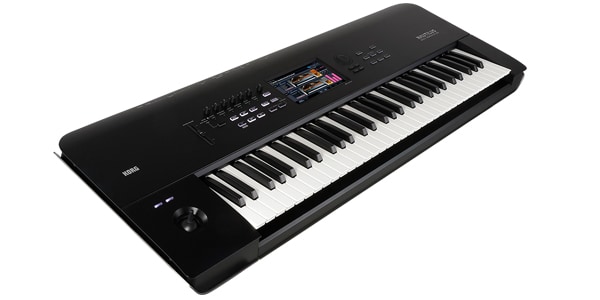
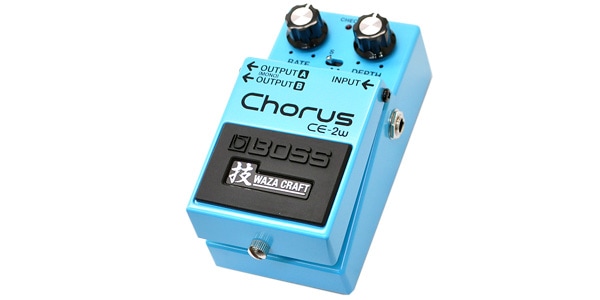

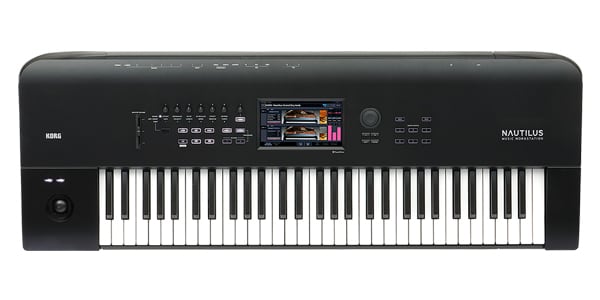

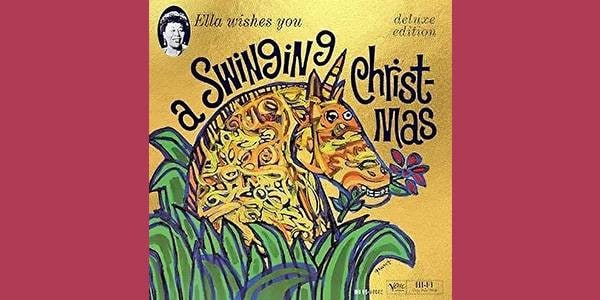
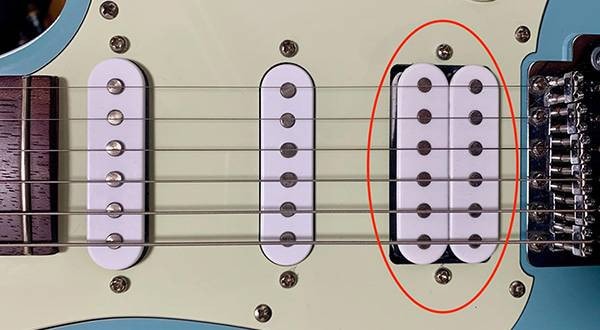
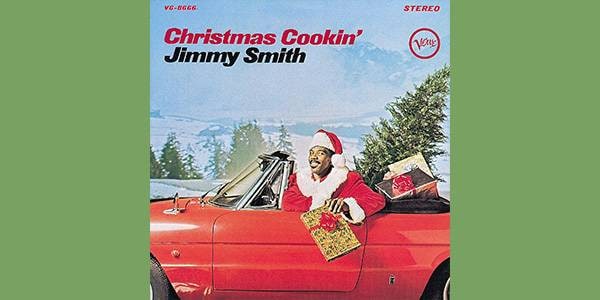

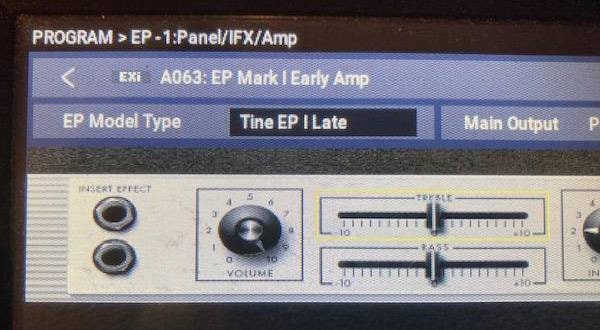

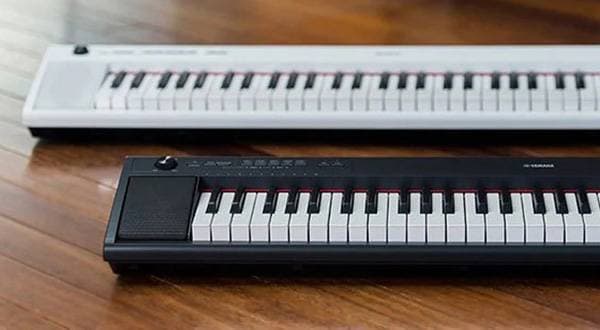
![[For beginners] Keyboard types and how to choose one](/contents/uploads/thumbs/2/2020/9/20200923_2_11196_1.jpg)

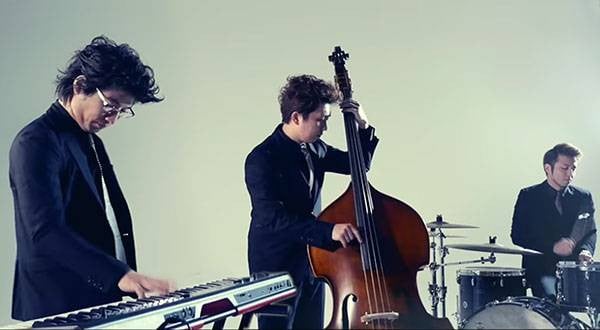
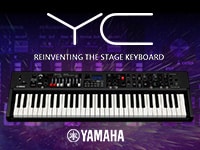 YAMAHA YC61 特集
YAMAHA YC61 特集
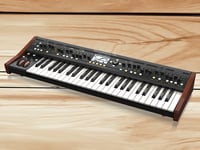 シンセサイザー 入門ガイド
シンセサイザー 入門ガイド
 PLAYTECH キーボードセレクター
PLAYTECH キーボードセレクター
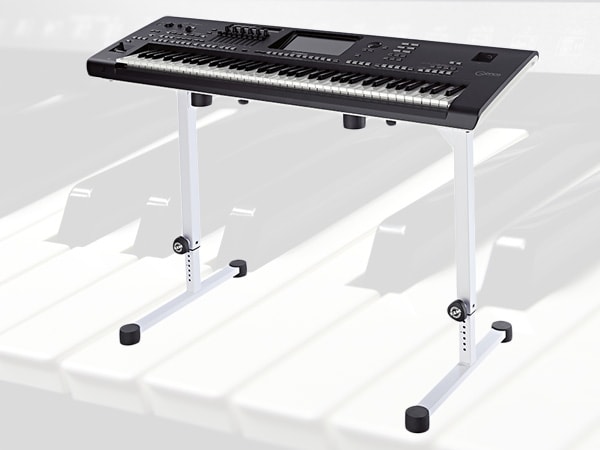 キーボードスタンドの選び方
キーボードスタンドの選び方
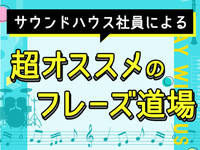 超オススメのフレーズ道場 キーボード
超オススメのフレーズ道場 キーボード
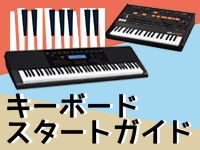 キーボードスタートガイド
キーボードスタートガイド
